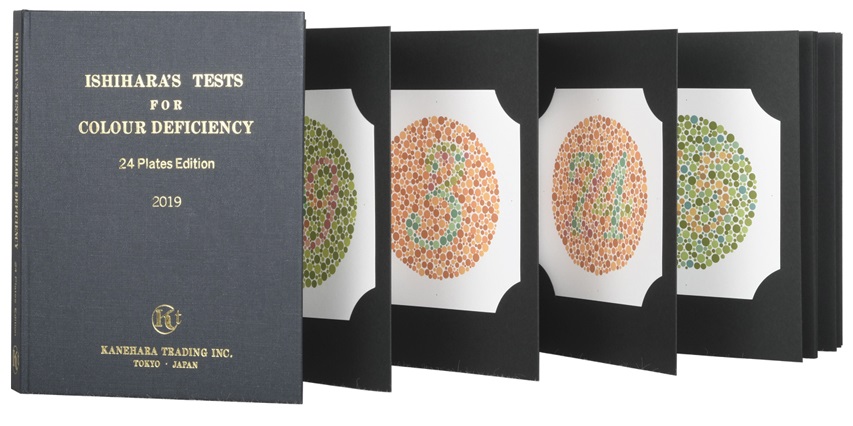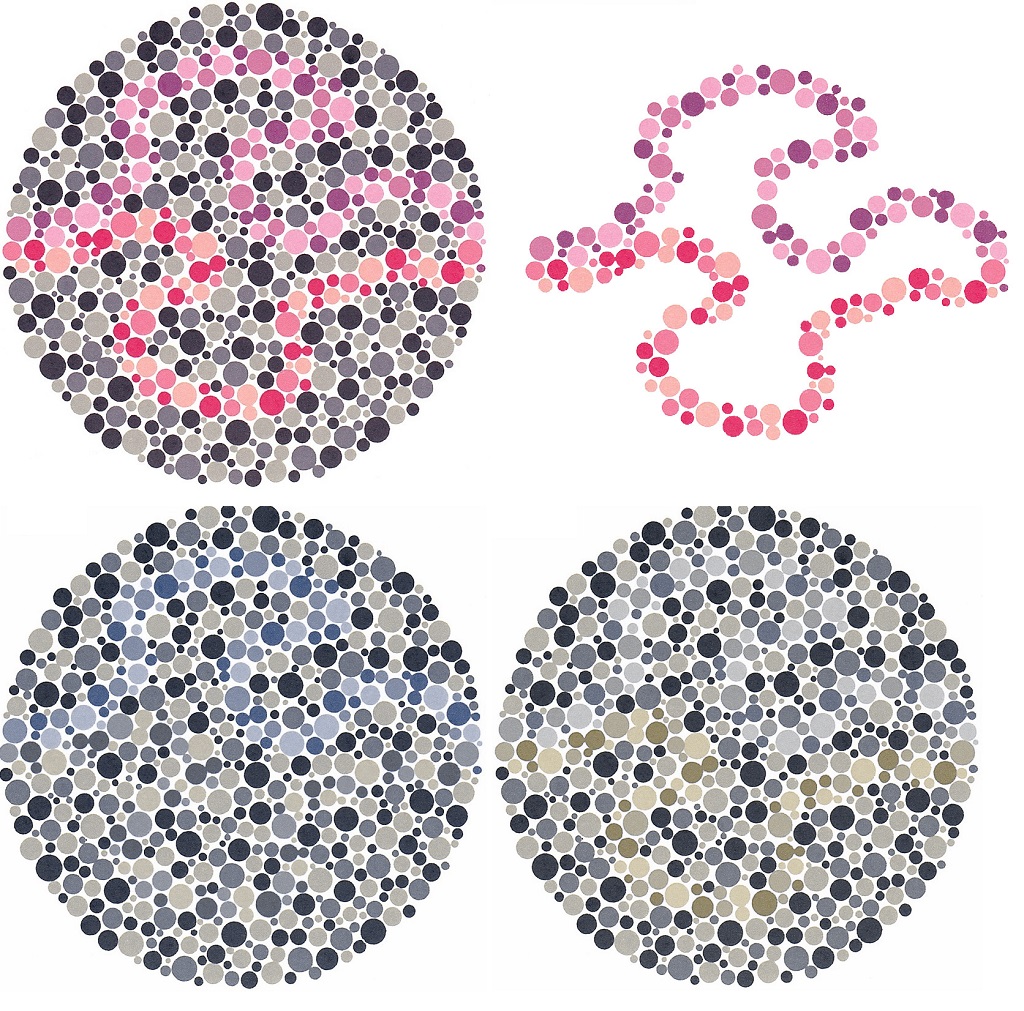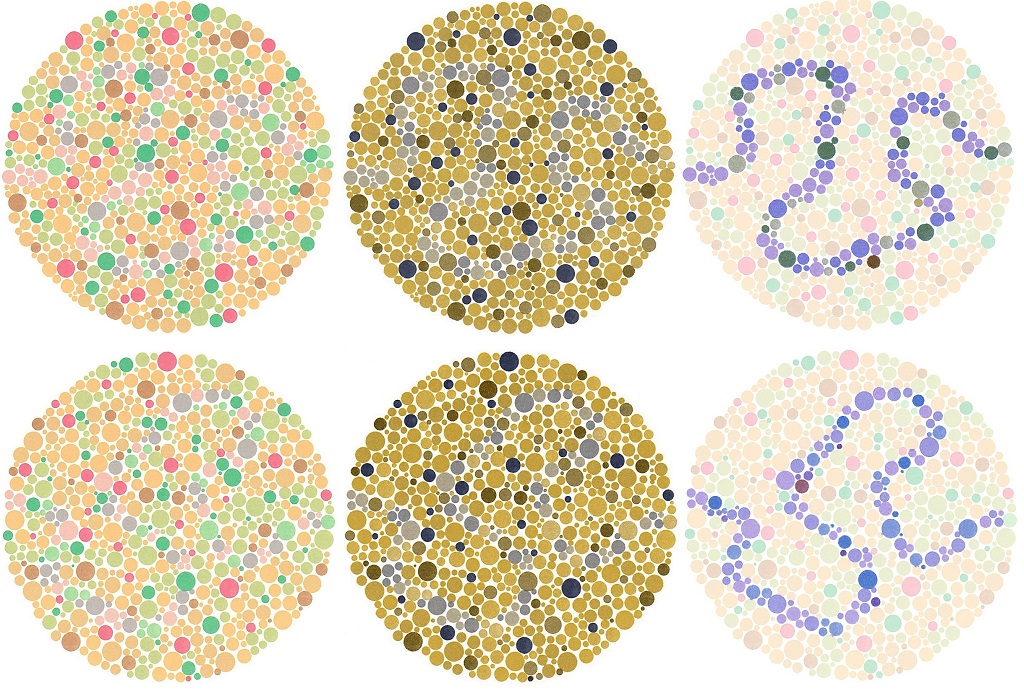Ishihara Traceing Lines Color Blind Test
Contents
Ishihara test

The Ishihara test is a color blind test for red-green color deficiencies. The first in a class of successful color vision tests called pseudo-isochromatic plates ("PIP"). It was named after its designer, Shinobu Ishihara, a professor at the University of Tokyo, who first published his tests in 1917. Since then this is the most widely used and well known color vision deficiency test and still used by most optometrists and ophthalmologists all around the world.
The test consists of a number of Ishihara plates, each of which depicts a solid circle of colored dots appearing randomized in color and size. Within the pattern are dots which form a number or shape clearly visible to those with normal color vision, and invisible, or difficult to see, to those with a red-green color vision defect. Other plates are intentionally designed to reveal numbers only to those with a red-green color vision deficiency, and be invisible to those with normal red-green color vision. The full test consists of 38 plates, but the existence of a severe deficiency is usually apparent after only a few plates. There are also Ishihara tests consisting of 10, 14 or 24 test plates, and plates in some versions ask the viewer to trace a line rather than read a number.
Tracing plates
Instead of reading a number, subjects are asked to trace a visible line across the plate. To pass each test you must correctly trace the wiggly lines. Each tracing should be completed within ten seconds.
Plates:
No. 38. In tracing the winding lines between the two X's, both the normal and those with colour vision deficiencies are able to trace the line.

No. 26 and 27. In tracing the winding lines between the two X's , the normal trace along the purple and red nlines. In protanopia and strong protanomalia only the purple line is traced , and in case of mild protanomalia both lines are traced but the purple line is easier to follow. In deuteranopia and strong deuteranomalia only the red line is traced, and in case of mild deuteranomalia both lines are traced but the red line is easier to follow.
1. line: Normal view / Isolated lines
2. line: Protanop view / Deuteranop view

No. 28 and 29. In tracing the winding lines between the two X's, the majority of those with red-green deficiencies trace along the line, but the majoirity of the normal and those with total colour blindness and weakness are unable to follow the line.
Normal view / Protanop view / The lines were made visible by image processing

No. 30 and 31. In tracing the winding lines between the two X's, the normal trace the bluish-green line, but the majority of those with colour vision deficiencies are unable to follow the line or follow a line different from the normal one.
No. 32 and 33. In tracing the winding lines between the two X's, the normal trace the orange line, but the majority of those with colour vision deficiencies are unable to follow the line or follow a line different from the normal one.
No. 34 and 35. In tracing the winding lines between the two X's, the normal trace the line connecting the bluish-green and yellowish-green, those with red-green deficiencies trace the line connecting the bluish-green and prple, and those with total colour blindness and weakness are not able to trace the line.
No. 36 and 37. In tracing the winding lines between the two X's, the normal trace the line connecting the purple and orange, those with red-green deficiencies trace the line connecting the purple and bluish-green, and those with total colour blindness and weakness are not able to trace the line.
Online Tracing Lines Ishihara Color Blind Test
1. Trace the line across the plates using your mouse (PC) or your finger (mobile).
2. Press the 'CHECK & NEXT' button to check the result.
3. If your trace is inside the red dashed line, then you have solved it well.
4. Press the 'CHECK & NEXT' button for the next image.
5. There will be 12 images, plus and Intro plates in the beginning. Maybe there isn't just one line!
6. If you want to retrace your line, just click the 'CLEAR MY LINE' button.
7. To pass the test you must correctly trace at least 9 from the first 10 wiggly lines.
8. Only individuals with color blindness could recognize the last two plates and normal color vision observer don't see!
The test can be used optimally on a PC or tablet, but it also works on a mobile. Not suitable for clinical diagnosis!














































